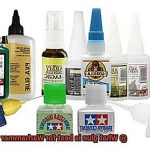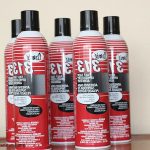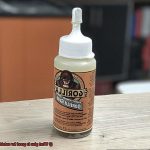Ever been in a sticky situation while tinkering with delicate electronics or intricate circuitry? Well, fear not. Today, we’re embarking on a quest to uncover the secrets of non-conductive glue – the superhero of adhesives that saves the day without causing electrical mayhem.
Now, let’s get one thing straight – not all glues are created equal. Some conduct electricity and can wreak havoc on sensitive electronic components. But fear not, my friends. There are alternatives out there that can keep your projects intact and shield them from short circuits or damage.
In this epic guide, we’ll dive deep into the world of non-conductive glues. We’ll explore different types that work like insulators and learn how they can be used in various scenarios. Whether you’re a DIY enthusiast, a circuit designer extraordinaire, or a pro in the field, this knowledge will become an invaluable asset in your adhesive arsenal.
So buckle up and join us on this thrilling quest as we shed light on the key types of non-conductive glues. We’ll discover their applications and unravel the mysteries behind choosing the perfect adhesive for your specific needs.
No more waiting – let’s dive into a world where adhesion meets insulation and where functional reliability is at the very core of our projects. Get ready to unlock the power of non-conductive glue.
Types of Non-Conductive Glue
Contents
- 1 Types of Non-Conductive Glue
- 2 Advantages of Non-Conductive Glue
- 3 Disadvantages of Non-Conductive Glue
- 4 Considerations When Selecting Non-Conductive Glue
- 5 Common Applications for Non-Conductive Glue
- 6 High Voltage Applications and Non-Conductive Glue
- 7 Conductive vs. Non-Conductive Glues
- 8 Using Non-Conductive Glues Safely and Effectively
- 9 Conclusion
When it comes to selecting the right glue for your needs, the options can be overwhelming. However, if you require a glue that does not conduct electricity, there are several types of non-conductive glues available that provide excellent electrical insulation properties.
In this article, we will delve into the characteristics and uses of five commonly used non-conductive glues.
By understanding the unique features of epoxy resin, silicone adhesive, polyurethane adhesive, UV-curing adhesive, and cyanoacrylate adhesive, you can make an informed decision for your specific bonding requirements.
Epoxy Resin:
Epoxy resin is a versatile two-component adhesive known for its strong and durable bond. With excellent electrical insulation properties, it is a popular choice for applications where electrical conductivity must be avoided. Whether you are working on electronics or automotive projects, epoxy resin provides reliable bonding.
Silicone Adhesive:
Silicone adhesive is renowned for its high temperature resistance and flexibility. It forms a strong bond with various materials such as plastics, metal, and glass. Moreover, silicone adhesive offers excellent electrical insulation properties, making it an ideal choice for the electronics and electrical industries.
Polyurethane Adhesive:
Polyurethane adhesive is a versatile option suitable for various applications. It offers strong bonding on different surfaces and exhibits good resistance to heat, chemicals, and moisture. With its excellent electrical insulation properties, polyurethane adhesive is widely used in electronic and electrical applications.
UV-curing Adhesive:
UV-curing adhesive revolutionizes industries like electronics and medical devices due to its rapid curing when exposed to ultraviolet (UV) light. This adhesive type allows for quick and efficient bonding processes while providing good electrical insulation properties.
Cyanoacrylate Adhesive:
Cyanoacrylate adhesive, also known as super glue or instant glue, can be modified to be non-conductive. It bonds quickly and provides high strength, making it suitable for various materials. Non-conductive cyanoacrylate adhesive is commonly used in electronics where fast bonding and electrical insulation are essential.
Conclusion:
Selecting the right non-conductive glue is crucial for applications where electrical conductivity must be avoided. Whether you are working on electronics, automotive projects, or other applications, there is a non-conductive glue suitable for your needs.
By understanding the unique features and uses of different types of non-conductive glues like epoxy resin, silicone adhesive, polyurethane adhesive, UV-curing adhesive, and cyanoacrylate adhesive, you can make an informed decision and ensure a strong bond with excellent electrical insulation properties.
Advantages of Non-Conductive Glue
In the realm of adhesives, non-conductive glue reigns supreme. When working with delicate electrical components or seeking to insulate sensitive areas, this adhesive is your ultimate solution. This article will explore the captivating advantages of non-conductive glue and why it should be your adhesive of choice for electrical insulation and safety.
Electrical Insulation:
The primary advantage of non-conductive glue lies in its exceptional ability to provide electrical insulation. By impeding the flow of electricity, it safeguards your electronic devices from potential damage and short-circuiting. Whether you’re securing wires or circuit boards, non-conductive glue ensures a reliable and isolated connection.
Safety First:
Non-conductive glue takes center stage when it comes to safety. Its insulating properties significantly diminish the risk of electrical shock or fire hazards, making it a prime choice for industries handling high-voltage equipment or delicate electronics. With this adhesive, accidental electrical contact is minimized, fostering a safer working environment.
Versatile Bonding Solutions:
Non-conductive glue transcends the boundaries of the electronics industry. Its versatility allows for diverse applications across various sectors. Whether you’re in automotive, aerospace, or medical device manufacturing, non-conductive glue provides secure bonding and electrical insulation for components under different conditions.
Withstanding Extreme Conditions:
Non-conductive glue thrives under extreme conditions. It boasts remarkable temperature resistance, making it perfect for applications subjected to intense heat or cold. While other adhesives may falter under harsh circumstances, non-conductive glue remains steadfast, maintaining its integrity and bonding strength.

Chemical Resistance:
Industries exposed to solvents, oil, or water find solace in non-conductive glue. Its resistance to various chemicals ensures that bonded components remain intact and functional even in challenging environments. So whether you’re bonding components confronted with oil or fuel, rest assured that non-conductive glue has you covered.
Durability and Longevity:
Non-conductive glue is designed to withstand the test of time. Its durability ensures that bonded components remain securely attached, even in the face of moisture, temperature changes, or vibrations. Count on this adhesive to keep your bonds intact for an extended period, providing peace of mind.
Ease of Use:
Applying non-conductive glue is a breeze. With various dispensing methods available, such as syringes or applicator pens, precise and controlled application becomes effortless. Additionally, its quick curing time allows for efficient production processes, saving you time and effort.
Disadvantages of Non-Conductive Glue
Non-conductive glue may seem like the perfect solution for electrical insulation and safety, but it’s important to understand its limitations. In this blog post, we’ll dive into the disadvantages of using non-conductive glue, shedding light on some crucial drawbacks that can impact its suitability for certain applications.
Limited bonding strength:
Non-conductive glues typically have lower bonding strength compared to their conductive counterparts. This drawback can be a major concern in industries like automotive and aerospace, where robust bonding is crucial. Weaker bonds may lead to failures or compromises in the integrity of the assembly, making it necessary to explore alternative adhesive options for applications that require high strength and durability.
Limited temperature resistance:
Non-conductive glues often struggle to withstand extreme temperatures. When exposed to heat, these glues can degrade or lose their adhesive properties, posing a risk to the bonded materials. In environments where temperature variations are common, such as electronic devices or machinery operating in harsh conditions, non-conductive glues may not be the best choice. Conductive adhesives with superior temperature resistance should be considered instead.
Lack of electrical conductivity:
While non-conductive glues excel at providing electrical insulation, their lack of electrical conductivity can be a disadvantage in certain scenarios. For applications where electrical connectivity is vital, such as bonding electronic components or circuits, non-conductive glues simply won’t cut it. Conductive adhesives ensure proper electrical flow and functionality, making them a preferred choice in these situations.
Not suitable for all materials:
Not all materials are compatible with non-conductive glues. Metals or certain plastics may require conductive adhesives to achieve reliable bonding. Non-conductive glues might struggle to adhere well to these materials or offer the necessary strength and durability required for specific applications.
It’s essential to consider the compatibility of the glue with the materials being bonded to avoid potential failures or weaknesses in the bond.
Longer curing time:
Non-conductive glues often have longer curing times compared to their conductive counterparts. This extended curing period can slow down production or assembly processes, leading to delays and increased manufacturing costs. In industries where efficiency and productivity are paramount, the longer curing time of non-conductive glues can be a significant drawback.
Considerations When Selecting Non-Conductive Glue
Non-conductive glue is like a mighty superhero in the world of electrical insulation. But before you embark on your adhesive adventure, it’s important to consider a few key factors that will help you select the perfect non-conductive glue for your specific application. In this blog post, we will dive deep into the considerations that will ensure your adhesive success.
Material Compatibility:
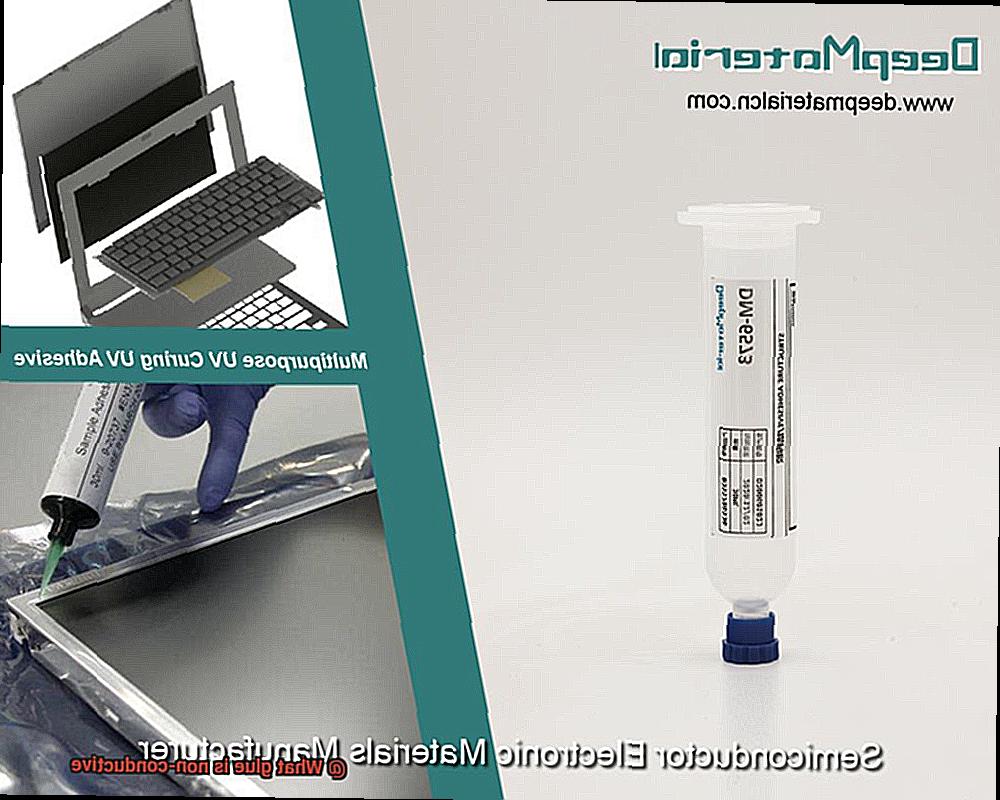
Just like superheroes have their kryptonite, non-conductive glues have their limits too. Each glue is designed to bond specific materials such as plastic, metal, or ceramic. To ensure a bond that’s as strong as a superhero’s grip, it’s crucial to choose a non-conductive glue that is compatible with the materials you’re working with.
Curing Time:
Time waits for no one. Some non-conductive glues require longer curing times, while others dry in a flash. Consider your project requirements and timeline when selecting your adhesive ally. Quick-drying glues may be perfect for urgent repairs, while longer curing times might be necessary for more complex projects.
Strength and Durability:
Will your project face a barrage of vibrations, temperature fluctuations, or exposure to chemicals? If so, you’ll need a non-conductive glue that can withstand these challenges with true superhero strength. Make sure the glue you choose has the necessary durability and strength to meet your specific needs.
Ease of Use:
Even superheroes need user-friendly tools. Look for non-conductive glues that come in convenient applicators like syringes or squeeze bottles, making it easier to apply the adhesive precisely and evenly. Additionally, consider the open time of the glue – how long can you make adjustments before it sets?
Safety Precautions:
Safety is paramount. Some glues may contain harmful chemicals or emit strong odors during application or curing. Protect yourself and your surroundings by choosing a non-conductive glue that is safe to use in your specific environment. Always follow the recommended safety guidelines provided by the manufacturer.
Common Applications for Non-Conductive Glue
Non-conductive glue is here to save the day. This incredible adhesive has a unique superpower – it doesn’t conduct electricity. But what does that mean for you? Let me take you on a journey through the common applications for this magical substance.
First up, we have the electronics industry. As our devices get smaller and more complex, the need for effective electrical insulation becomes crucial. Non-conductive glue is the perfect solution for bonding and securing electronic components, preventing any unwanted electrical connections or short circuits. It’s like a shield that protects your precious gadgets from harm.
But wait, there’s more. The automotive industry also benefits from the power of non-conductive glue. With the increasing integration of electronics in vehicles, proper insulation is essential to prevent any electrical malfunctions or accidents. Non-conductive glue can secure wiring harnesses and protect sensitive electronic components from moisture, vibrations, and other environmental factors. It’s like a seatbelt for your car’s electrical system.
And let’s not forget about the medical field. Medical devices often contain delicate electronic components that require insulation to prevent interference or damage. Non-conductive glue provides a reliable solution for bonding these components without compromising their functionality or safety. It’s like a doctor’s steady hand, ensuring everything stays in place.
Non-conductive glue isn’t just for industries. It has everyday applications too. Need to repair or insulate an electrical cord? Non-conductive glue has got your back. Want to secure small electronic devices or create custom circuit boards for your DIY projects? Non-conductive glue is there to lend a helping hand.
But the applications don’t stop there. Let’s take a look at some other industries where non-conductive glue is making a difference:
- Aerospace: Aircraft and spacecraft systems are highly sensitive to electrical interference, making proper insulation crucial. Non-conductive glue can secure wiring, seal connectors, and protect electronic components from extreme temperatures and vibrations.
- Construction: Non-conductive glue can be applied to secure electrical wires and cables, providing insulation and preventing electrical hazards. It is also used in the installation of lighting fixtures, switches, and other electrical components.
- Renewable Energy: Non-conductive glue plays a vital role in securing solar panels and wind turbines. These systems rely on electrical connections for efficient power generation. Non-conductive glue ensures proper insulation, preventing any loss of energy due to short circuits or faulty connections.
- Research and Development: Scientists and engineers often use non-conductive glue to prototype and test electronic circuits and components. It allows them to create temporary connections without the risk of accidental short circuits or damage.
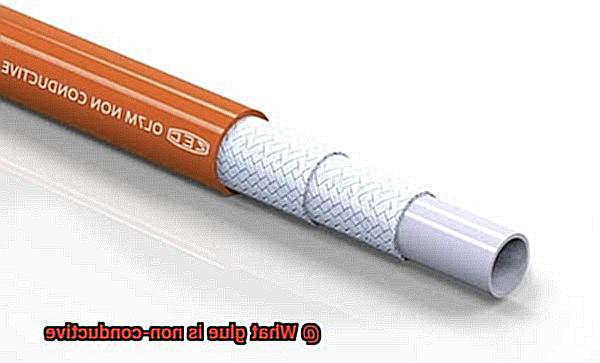
High Voltage Applications and Non-Conductive Glue
Step into the captivating world of glue, where the unassuming becomes extraordinary. In this electrifying adventure, we explore the indispensable role of non-conductive glue in high voltage applications. Buckle up and prepare for a journey that will leave you shocked.
The Shocking Truth:
Non-conductive glue is the key to preventing electrical mishaps in high voltage applications. With its exceptional resistivity to electrical current, this specialized adhesive provides reliable insulation, safeguarding against short circuits and electric shocks.
Versatile Applications:
Prepare to be amazed by the versatility of non-conductive glue. It plays a vital role in securely assembling electronic components, ensuring they work harmoniously without any electrical interference. Additionally, it is a crucial ingredient in the construction of power lines, where proper insulation is essential to prevent power losses and accidents.
Transformers and More:
The manufacturing of high voltage transformers relies on the use of non-conductive glue. By ensuring impeccable insulation between windings and other components, this adhesive optimizes the voltage stepping up or stepping down process in electrical systems.
Know Your Glue:
Non-conductive glues come in various forms, each with its own unique properties suitable for specific applications. Epoxy adhesives, silicone adhesives, and polyurethane adhesives are just a few examples of these remarkable substances.
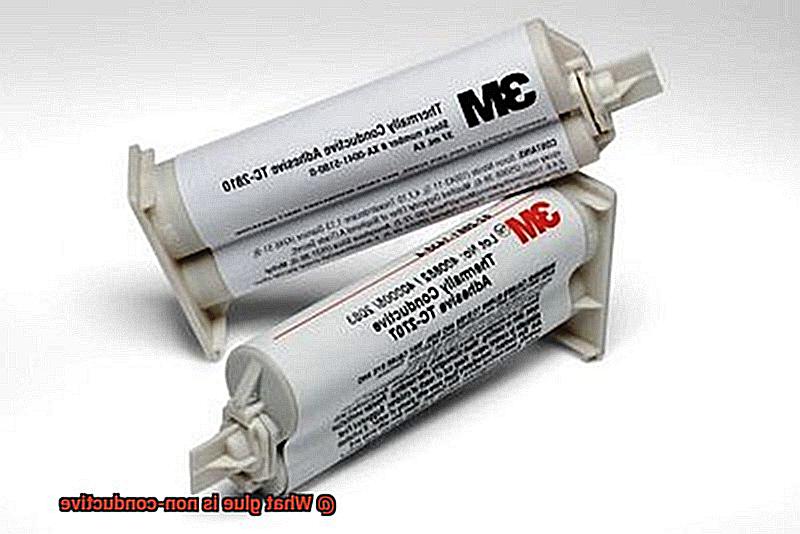
Key Considerations:
When selecting non-conductive glue for high voltage applications, several factors must be carefully considered. Dielectric strength, thermal conductivity, and temperature resistance are paramount in determining how well the adhesive can withstand extreme conditions without compromising its insulating capabilities.
Application Process:
Applying non-conductive glue requires precision and attention to detail. A thin layer is meticulously coated between the surfaces to be bonded, ensuring no air bubbles or voids compromise the adhesive’s insulating properties.
Patience is a Virtue:
Allowing sufficient curing time is crucial before subjecting the glue to high voltage conditions. This patient approach ensures optimal bonding and hardening, guaranteeing reliable insulation and stability.
Safety First:
Regular inspection and maintenance are essential to ensure the continued safety and reliability of non-conductive glue in high voltage applications. Periodic checks and repairs mitigate potential degradation or wear and tear, preserving its insulating properties.
Conductive vs. Non-Conductive Glues
Glue may seem like an everyday item, but did you know it has the power to conduct electricity or insulate against it? In this electrifying article, we will dive deep into the fascinating world of conductive and non-conductive glues, exploring their properties, applications, and considerations to help you make the right choice for your projects.
Conductive Glues: Connecting the Circuits
Conductive glues are the unsung heroes in the realm of electronics. With metallic particles or flakes in their formulation, these glues create electrical connections between surfaces, ensuring a smooth flow of current. They find their applications in circuit board assembly and bonding wires, where a reliable electrical connection is vital.
Key Features:
- High electrical conductivity
- Ideal for electronics and electrical applications
- Rigid and less flexible than non-conductive glues
Non-Conductive Glues: Insulation at Your Fingertips
Non-conductive glues take on the role of electric superheroes, providing excellent insulation and preventing the flow of electricity. Without conductive materials in their formulation, these glues are perfect for situations where electrical isolation is required. They are commonly used to insulate electrical components and secure delicate electronic parts.
Key Features:
High electrical resistance
- Ideal for applications where electricity could cause damage or interference
- Offers mechanical strength and flexibility compared to conductive glues
- Choosing the Right Glue: Considerations to Keep in Mind
- Application requirements: Determine whether you need electrical conductivity or insulation.
- Flexibility: Conductive glues are rigid, while non-conductive glues offer flexibility.
- Thermal conductivity: Conductive glues excel in heat dissipation, whereas non-conductive glues provide thermal insulation.
- Mechanical strength: Consider the load-bearing capacity required for your project.
- Adhesive type: Conductive glues include silver-filled epoxy and carbon-based adhesives, while non-conductive options range from epoxy to polyurethane adhesives.
Using Non-Conductive Glues Safely and Effectively
Welcome to the electrifying world of non-conductive glues. These specialized adhesives are designed to provide insulation and prevent electrical current from flowing through them. Whether you’re working on electronic repairs, crafting, or any other application where electrical insulation is required, non-conductive glues can be a game-changer. But how do you use them safely and effectively? Let’s dive in.
Read and Follow Instructions
The golden rule of using non-conductive glues is to read and follow the instructions provided by the manufacturer. Each type of glue may have specific guidelines for application, drying time, and curing process. By adhering to these instructions, you can achieve the desired level of insulation and ensure the glue performs as intended.
Clean and Prepare Surfaces
Before applying non-conductive glue, make sure to clean and prepare the surfaces that will be bonded. Any dirt, dust, or grease can interfere with the adhesive properties of the glue and compromise its effectiveness. Use a mild solvent or rubbing alcohol to clean the surfaces thoroughly, and then allow them to dry completely before applying the glue.
Apply Sparingly
Less is more when it comes to non-conductive glue. Applying too much can lead to excess oozing or spreading onto nearby components or areas where insulation is not desired. A small amount of glue is usually sufficient to create a strong bond while providing insulation. Plus, using too much glue can increase drying time and affect the overall appearance of your project.
Apply Pressure
To ensure proper adhesion, apply pressure after bonding the surfaces with non-conductive glue. This can be done by using clamps or placing a heavy object on top of the bonded surfaces. Applying pressure helps achieve maximum contact between the adhesive and the surfaces, ensuring a strong bond.
Allow for Proper Curing Time
Patience is key when using non-conductive glues. Allow enough time for the glue to fully cure before subjecting it to stress or handling. Curing time can vary depending on the type of glue used, so refer to the manufacturer’s instructions for specific guidelines. Rushing the curing process can result in a weaker bond and reduced insulation properties.
Maintain a Clean Workspace
Keep your workspace clean and organized when working with non-conductive glues. This prevents accidental spills or contamination, which can affect the performance of the glue. Remember to keep the glue container tightly closed when not in use and store it in a cool, dry place to maintain its integrity.
Wear Personal Protective Equipment (PPE)
Safety first. Some non-conductive glues may contain chemicals that can be harmful if ingested or come into contact with the skin or eyes. Always refer to the safety data sheet (SDS) provided by the manufacturer for information on potential hazards and recommended protective measures. Wear gloves, safety glasses, and any other PPE as recommended.
nxa4LddIb0o” >
Conclusion
When it comes to finding a glue that is non-conductive, there are several options available. These glues are specifically designed to prevent the flow of electricity, making them ideal for various applications. Whether you’re working on electronics, circuit boards, or any other project where electrical conductivity needs to be avoided, these non-conductive glues can be your go-to solution.
One popular option is epoxy resin glue. This adhesive not only provides excellent bonding strength but also offers high resistance to electrical conductivity. It forms a strong and durable bond while keeping electrical currents at bay.
Another choice is silicone-based adhesives. These glues are known for their insulating properties and are often used in electronic assemblies and wiring applications. They create a protective barrier against electrical currents, ensuring that your projects remain safe from short circuits or other electrical issues.
Furthermore, polyurethane adhesives can also be considered as non-conductive glues. These adhesives have excellent insulation properties and can effectively isolate electrical components from each other.
It’s important to note that when using non-conductive glues, proper application techniques should be followed to ensure optimal results. Thoroughly clean and prepare the surfaces before applying the glue, and allow sufficient curing time for the adhesive to fully set.
In conclusion, if you’re looking for a glue that is non-conductive, options like epoxy resin glue, silicone-based adhesives, and polyurethane adhesives can provide the insulation you need for your projects.



